If you are the happy owner of a site near a river, lake or other body of water, sooner or later you will need a platform, footbridges on the shore. What for? Fishing, sunbathing, running into the water and just watching the sunset. Our tips site will tell you how to build such a platform on the shore.
Also, maybe you have a boat or boat that needs to be moored somewhere. Then you will have to start building a full-fledged pier. From an engineering point of view, all such structures are divided into the following types:
- Pontoon berth, which settles on floating barrels and other containers;
- A platform on metal screw or wooden piles, which are screwed or driven into the bottom of the reservoir;
- Pier, breakwater, that is, a pier that runs perpendicular to the shore;
- Mooring walls, which are built along the coast from reinforced concrete structures or gabions, about which the portal told you in detail.
The quay walls are primarily designed to protect the coastline from undermining. It is almost impossible to build a full-fledged pier, a breakwater on your own, these are traditionally capital reinforced concrete structures that require special equipment. Most often, landlords near the water build simple walkways on piles or pontoon platforms. Let’s focus on them.
The easiest way is to build a pontoon on floating supports. Yes, the structure will not be as spacious and reliable as in the case of using piles, but it will definitely withstand two or three adults.
You need:
- Metal or plastic drums, at least four, and preferably six, for stability and to increase the maximum possible load. The volume of barrels is from 150 liters. You can also use rectangular plastic water tanks;
- Wooden beam, with a cross section of about 5 by 10 centimeters;
- Decking boards, maximum 3-4 centimeters thick.
We advise you to start assembling your platform, in fact, a raft, on the shore. First, we make a frame of beams. You can also use a metal profile, pipes, but then welding will be required. The dimensions of a standard platform of four barrels with a volume of up to 200 liters are 2.5×2.5×3.5 meters. The bars are fastened together simply with nails or self-tapping screws for wood.
Important! Barrels must be leak-free and leak-proof! Otherwise, the pontoon will simply sink. The covers are screwed tightly, their threads are pre-lubricated with silicone. A sealant is applied around the plugs. Seams can be pre-welded in metal drums.
There are three options for attaching barrels to the frame:
- Make 4–6 holes in the upper part, which will be above the water and pass the ropes through them;
- Weld “ears” to metal barrels;
- Use mounting tape.
Now the structure is turned over and you can start arranging the flooring from the boards. So that your platform-raft does not float away, it is tied to a pile securely hammered on the shore, metal corners or a concrete post. Don’t forget to pull the pontoon ashore in autumn.
By the way, even the most common plastic bottles and car tires, ramps are used for the construction of pontoons..
The platform, piled-up walkways are, of course, more reliable than pontoon ones. They can be of very different lengths and widths, depending on the needs of the owners..
Two types of supports are used:
- Driving. Metal pipes with a sharpened tip or simply hewn in the form of a pencil wooden posts. They will need to be driven into the bottom of the reservoir;
- Screw piles. Always metal, as for a pile-screw foundation. They are more reliable, and it will be easier to screw them into the bottom..
Important! Getting to the right place on the muddy, reedy shore can be difficult. We advise you to drive in or screw in piles for the future pier in winter, when the reservoir is covered with thick enough ice. Make holes of the right size and screw in, drive in a pile. It is convenient to work three together – a third person is needed to control the level, whether the pile is skewed. A slight slope is allowed only towards the coast!
Important! The depth of twisting or driving the pile into the bottom is at least half a meter. And approximately the same distance should be from the upper end to the water. Consider how much the water level can rise during ice melting and heavy rains.
The width between the piles is from one and a half meters, otherwise the walkways will be too narrow, you will definitely not put a deck chair. Metal piles are fastened together with corners or steel I-beams. It is necessary to provide holes for fastening the floorboards. Yes, do not forget that for reliability, concrete mortar should be poured inside the screw pile. Or at least throw stones in the winter.
In general, the most difficult thing is to drive in, screw piles or pillars into the bottom. Otherwise, the construction of the frame and flooring will no longer cause big problems. For flooring, you can again use a board 3-4 centimeters thick, which should be treated with an antiseptic to protect it from moisture, can be painted for a decorative effect or opened with yacht varnish. You can also use a WPC deck board, in which case the berth will turn out to be especially beautiful and comfortable.
Important! If your pier will stand on a river with a fast current, make it in the shape of the letter “T” or “L” so that the crossbar goes against the current, literally “cut”.
What will be your platform, pier – it’s up to you. It may be the simplest and most unassuming fishing bridge made of old planks and logs. Or maybe a real recreation area with handrails, steps, a platform for sun loungers and a ladder so that it is convenient to get out of the water. It all depends on your financial capabilities and needs, the desire to fully use all the advantages of the proximity of the reservoir.
How to build a walkway, a platform, a pier by a reservoir with your own hands
This WordPress post explains how to build a walkway, platform, or pier beside a reservoir with your own hands. It provides detailed step-by-step instructions to ensure a sturdy and safe structure, as well as outlining the advantages of the project. Building a walkway, platform, or pier by a reservoir provides a unique spot for recreational activities, sightseeing, fishing, and picnics. Additionally, the project can serve as an excellent contribution to the beautification of your landscape. With clearly organized and straightforward instructions, this post is an ideal guide for any do-it-yourself enthusiast.
House and cottage, suburban construction


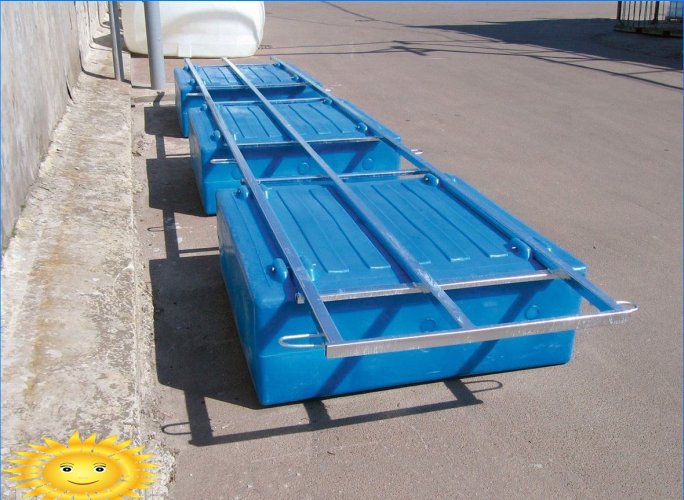

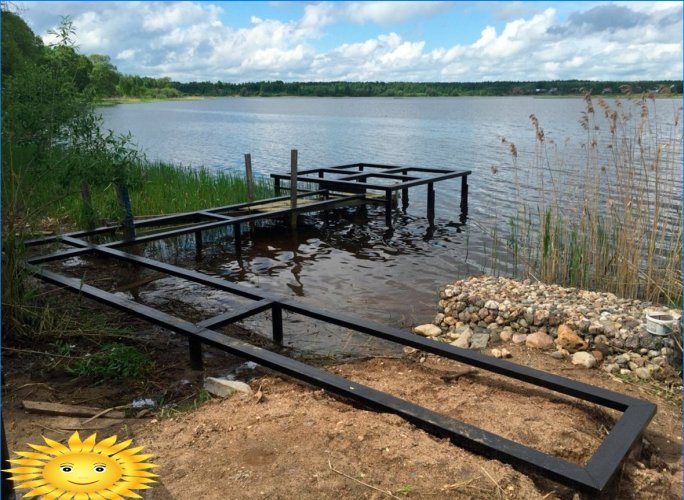

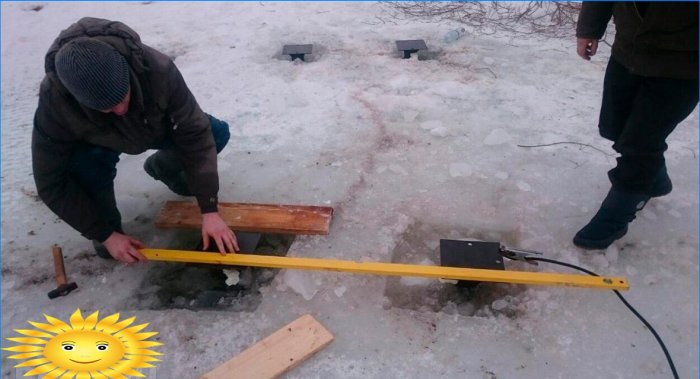
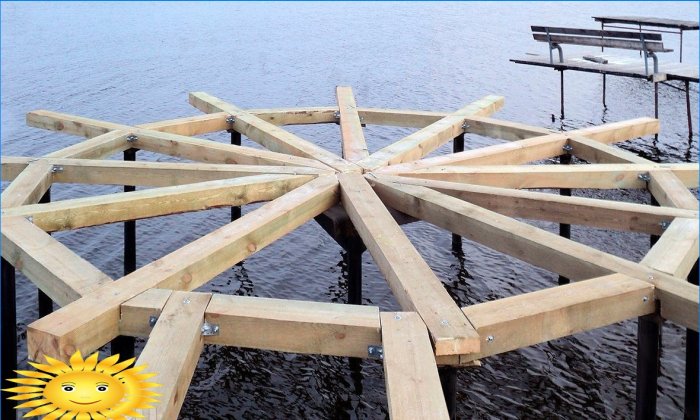

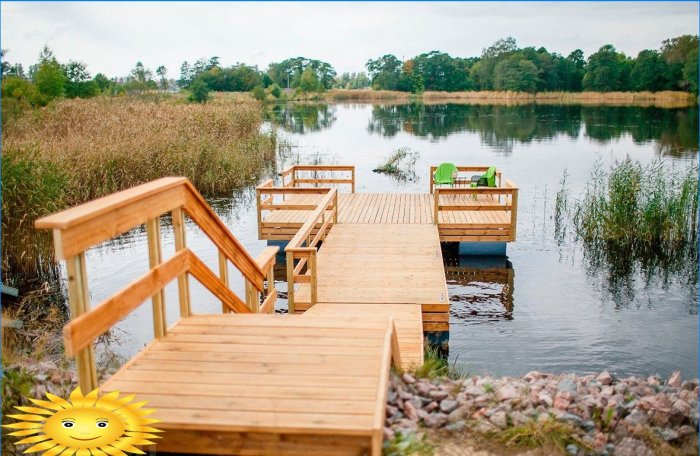
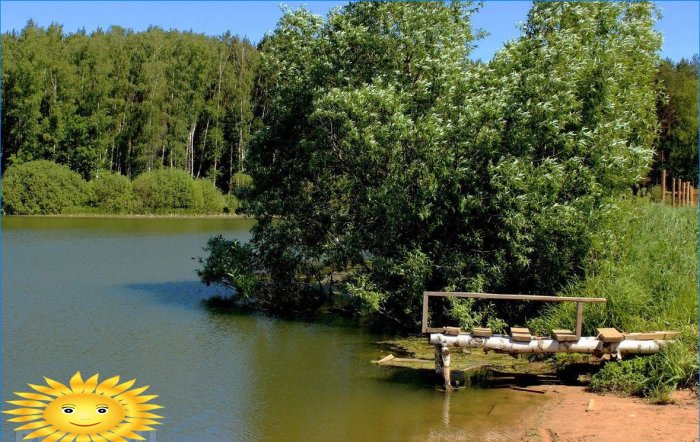
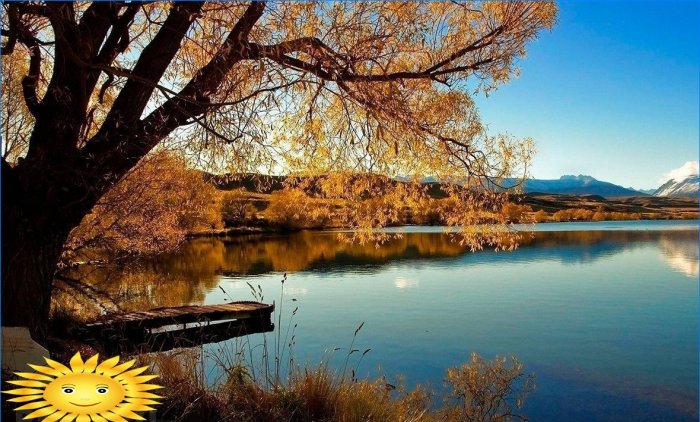
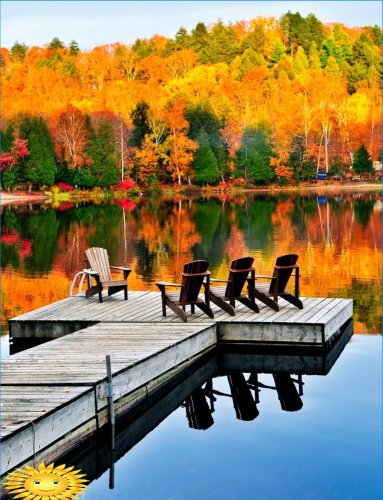
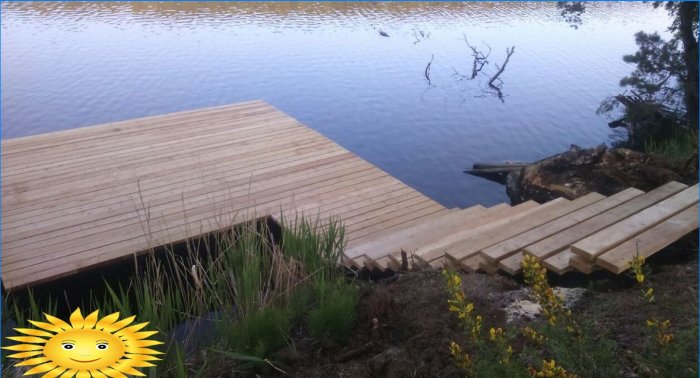
Can someone provide step-by-step instructions or a comprehensive guide on building a walkway, platform, or pier near a reservoir? I have little to no experience in construction, but would love to learn and create these structures on my own. Any tips, resources, or advice would be greatly appreciated. Thank you!
Building a walkway, platform, or pier near a reservoir requires careful planning and adherence to local regulations. Here is a general step-by-step guide for beginners:
1. Research regulations: Understand local regulations and permits required for constructing near a reservoir. Contact local authorities or consult a professional if needed.
2. Design and layout: Determine the desired location, size, and shape of your structure. Consider the purpose, material availability, and local environment.
3. Gather materials and tools: Consult construction guides or seek professional advice to determine the materials required for your specific project. Prepare necessary tools, such as shovels, drills, saws, and measuring equipment.
4. Site preparation: Clear the area of vegetation and debris. Ensure the ground is leveled and stable. Consider installing proper drainage systems to prevent water accumulation.
5. Foundation: Dig appropriate foundation holes or footings, ensuring they reach below the frost line for stability. Pour concrete into the holes and insert reinforcements if necessary.
6. Frame construction: Build the frame using appropriate materials, such as treated wood or metal. Follow your design plans and ensure the frame is sturdy and level.
7. Decking installation: Place the decking material, such as wooden planks or composite boards, onto the frame. Secure them with screws or nails, leaving proper gaps for expansion and drainage.
8. Railings and accessories: Install any necessary railings, handrails, or safety features. Consider using materials compliant with local safety codes.
9. Finishing touches: Apply protective coatings or sealants to the structure to enhance its longevity and resistance to water damage. Clean up the site and remove any construction debris.
Remember, it is crucial to consult professional resources, seek local guidance, and ensure compliance with safety regulations. Start small and consider working with experienced individuals to gain practical construction knowledge. Good luck with your project!
I would suggest researching local building codes and regulations before starting any construction project. Additionally, it could be beneficial to consult with professionals or experienced individuals in construction or carpentry. When it comes to building a walkway, platform, or pier by a reservoir, are there any specific concerns or challenges you would like assistance with?